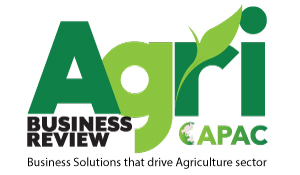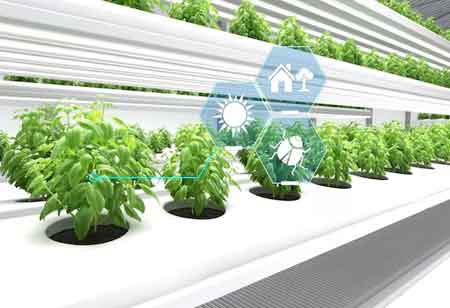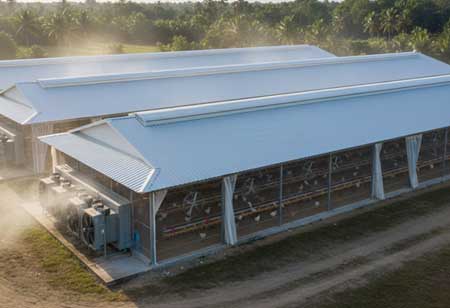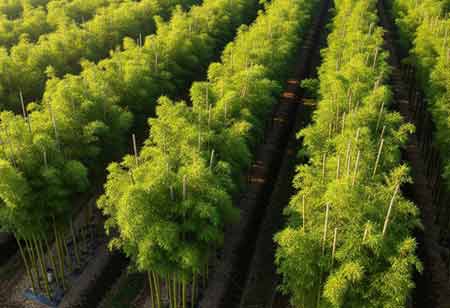Thank you for Subscribing to Agri Business Review Weekly Brief
Data Revolutionising Smart Farming
Digital agriculture is growing more significant in the global agriculture business, although yet being mostly obscure to the general population.
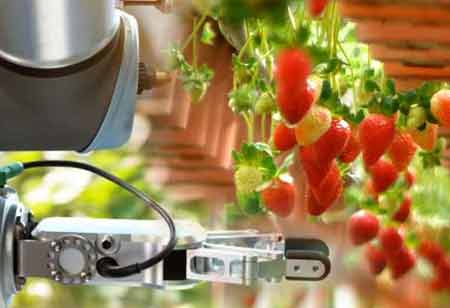
By
Agri Business Review | Thursday, April 13, 2023
Stay ahead of the industry with exclusive feature stories on the top companies, expert insights and the latest news delivered straight to your inbox. Subscribe today.
Digital agriculture uses emerging technologies—including sensors, drones, and artificial intelligence—to collect crop data that can be used to enhance agricultural outcomes.
FREMONT, CA: Digital agriculture is growing more significant in the global agriculture business, although yet being mostly obscure to the general population. Using cutting-edge technologies to maximise efficiency and boost productivity, this unique strategy seeks to enhance farm and crop management. The technology used to monitor soil conditions, climate, irrigation, and other elements crucial to effective agricultural output include sensors, drones, artificial intelligence, and automation.
Technologies in digital agriculture have the potential to drastically change how agriculture is now done. With expertise in engineering, computer technology, agronomy, and, of course, biotechnology, digital agriculture is an interdisciplinary field. Although there may be a steep learning curve, when used properly, digital agriculture technologies can significantly increase production. The advancement of information and communication technology has made it possible to collect real-time data and integrate systems better, enabling more accurate and effective decision-making. Sensors, drones, and other instruments can continuously monitor plant development, soil, water, and weather conditions.
To help them decide when to plant, irrigate, and fertilise their crops, producers may now get precise and comprehensive information about growing conditions in real-time. Farmers may reduce waste, save money, and boost plant output by monitoring soil and water conditions and adjusting the nutrients and water they give plants based on those demands.
Furthermore, data collecting aids farmers in early problem detection, enabling them to take corrective action before problems worsen. The ability to predict changes in weather and soil conditions in advance is another benefit of data collecting since it enables farmers to take preventive measures to minimise weather-related risks and losses.
Biotechnology and digital agriculture are closely related and work well together. Combining these two methods may enable farmers to create crops that are more flexible and produce more in a shorter amount of time. While digital agriculture enables farmers to monitor and manage their crops more accurately and effectively, biotechnology permits the production of plants that are more resistant to disease and climatic change.
Genetically modified organisms (GMOs) can be produced via digital agriculture, which enables farmers to monitor and manage plants in real time. It is feasible to assess plant performance, spot potential issues, and act more quickly to address them. Additionally, digital agriculture makes it possible to monitor GMOs, helping farmers comply with regulations and ensuring that their products are high-quality and safe. Real-time data collecting enables farmers to use fewer inputs and resources while producing more GMOs, which increases production efficiency and productivity.
In the cyber-physical farm management cycle, smart farming places a strong focus on the use of information and communication technology. Emerging technologies, including the Internet of Things and cloud computing, will take advantage of this progress and expand the use of robotics and artificial intelligence in agriculture. Big Data, which refers to vast quantities of diverse data that may be collected, analysed, and applied to decision-making, encompasses this concept.
Big data are being used to restructure corporate processes for game-changing business models, drive real-time operational choices, and provide predictive insights into farming operations. Therefore, according to several academics, big data will result in significant changes to the power dynamics and job descriptions of various participants in the current food supply chain networks. The stakeholder landscape reveals an intriguing competition between dominant tech giants, venture capitalists, and frequently small start-ups and new entrants. Several public agencies simultaneously release open data with the requirement that individual privacy be protected.
Two extreme scenarios could play out in the future of smart farming: One of two systems exist: either 1) closed, proprietary systems in which the farmer is part of a highly integrated food supply chain, or 2) open, collaborative systems in which the farmer and every other stakeholder in the chain network have the freedom to choose their business partners, both in terms of technology and food production. In the conflict between these two possibilities, the continued development of data and application infrastructures (platforms and standards) and their institutional embedding will be of utmost importance. From a socioeconomic angle, the authors suggest giving organisational governance challenges and appropriate commercial models for data sharing in various supply chain scenarios research priority.
Big Data technologies are vital to this evolution since machines now have a variety of sensors that collect information from their surroundings and utilise it to control how they behave. This ranges from quite basic feedback systems (such as a thermostat controlling temperature) to sophisticated learning algorithms (such as choosing the best crop protection plan). This is made more effective by merging it with other Big Data sources from outside, such as weather, market, or benchmark data from other farms.
Since big data and smart farming are both still relatively new ideas, it is to be expected that information concerning their uses and potential effects on R&D is not widely known. However, state-of-the-art in this field is changing quickly, and it will probably be obsolete soon after this work is published. Because it is anticipated that this would have a more long-lasting influence, the analysis largely focuses on the socio-economic impact Big Data will have on farm management and the entire network around it.
